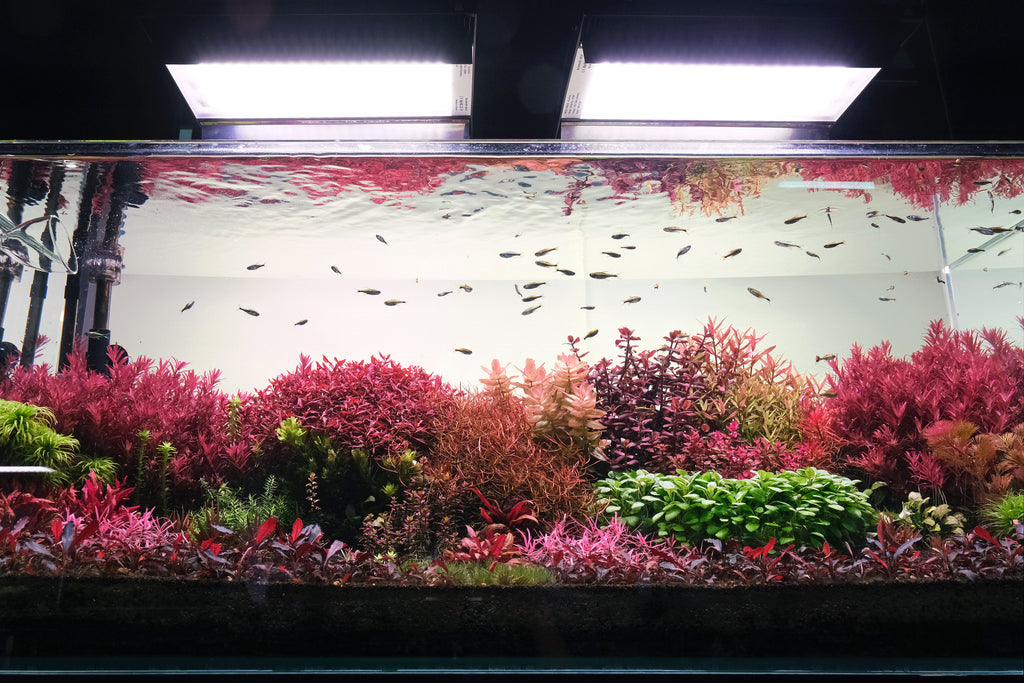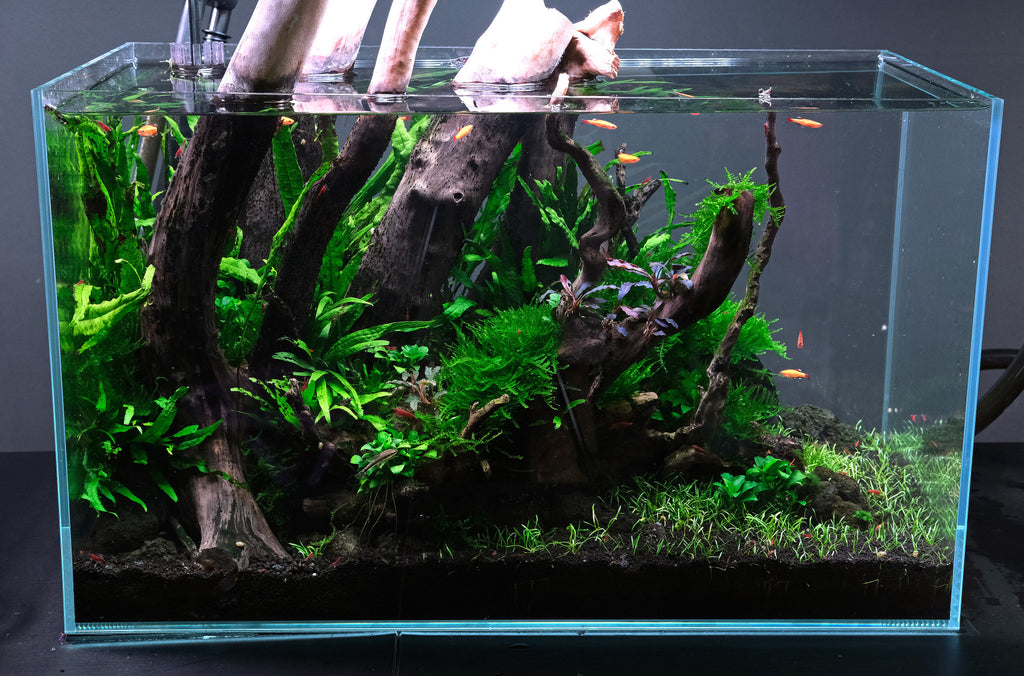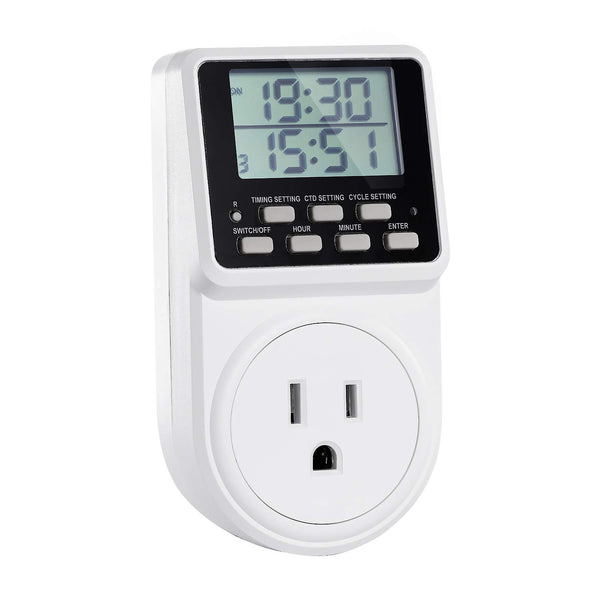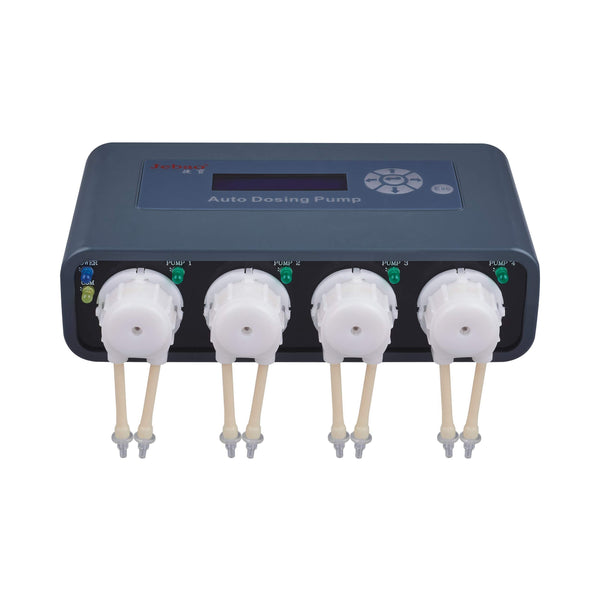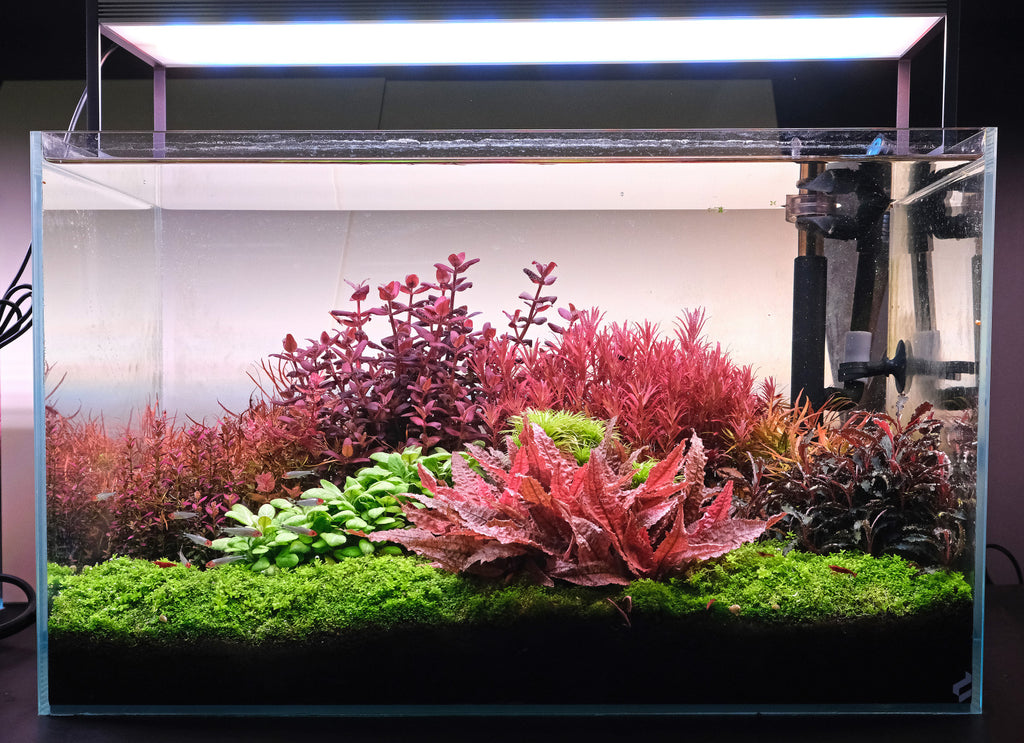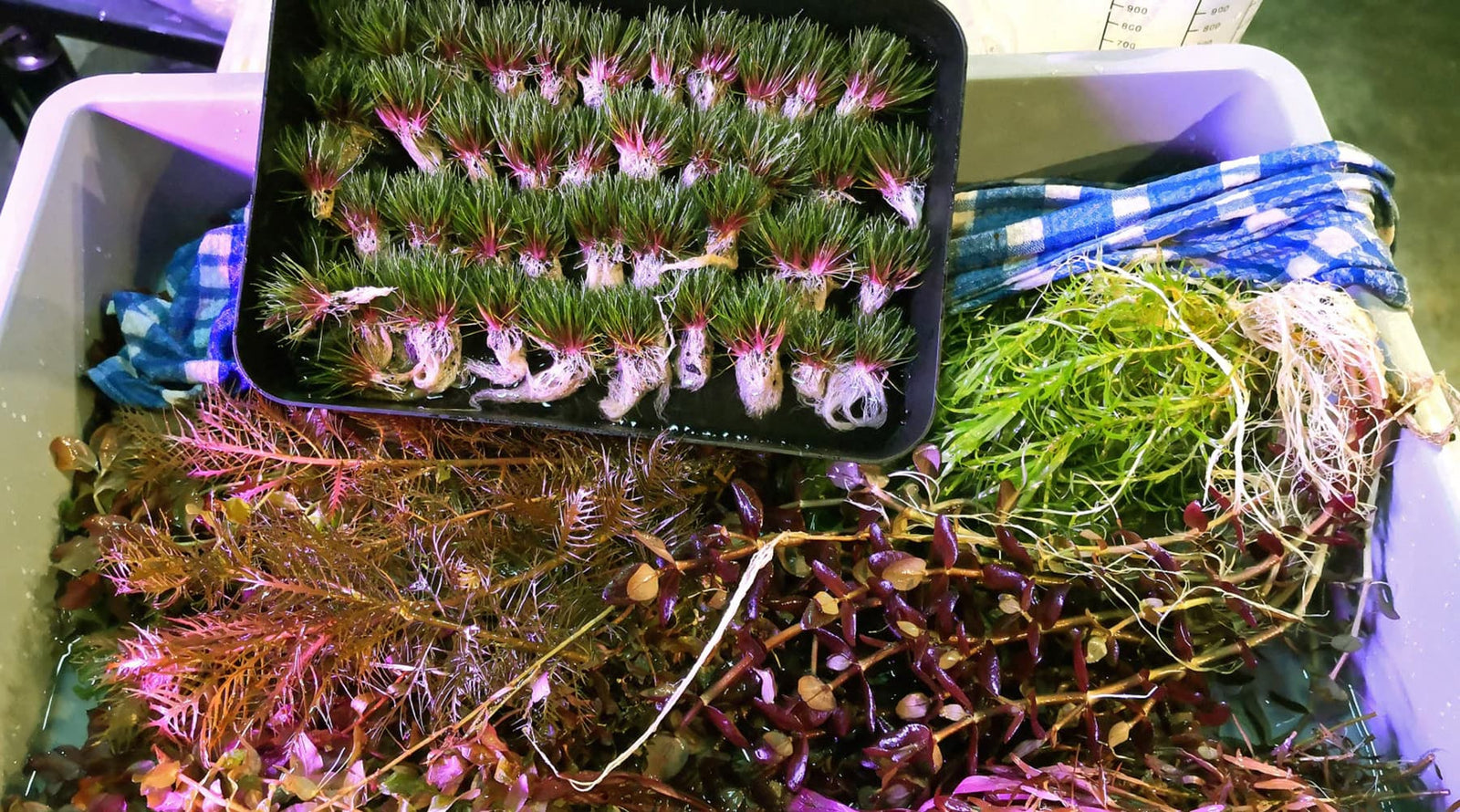
Introduction
There are quite a few considerations for planted tanks when the aquarist plans on going for a holiday.
On the safety angle, having a good setup where tank/equipment is of decent quality is important – having equipment failures can be catastrophic when there is no one around to rectify issues. Having the system well organized, with electrical points protected against water is also highly recommended.
How sensitive planted tanks are to being left alone is largely tied to 2 main factors: plant selection and light levels. Tanks with fast growing stem plants or demanding plants that require more care are more at risk. On the opposite end, tanks that use mainly mosses and slow growers can easily weather weeks without much intervention.
Light is the other main factor as it is the main driver of growth and tanks running higher light levels tend to have bigger fluctuations in their micro-climate: faster growing plants fill in and crowd out the slower growers, and stronger light triggers algae more easily.
A tank with high light and growing picky plants will need more preparation if it is going to be left unattended for a couple of weeks. While a tank with just easy mosses and epiphytes might not need any preparation work at all.
Above is an example of a tank with mostly fast growing stem plants that will quickly get over-crowded if left alone. The higher light levels will also trigger severe algae issues if, for example, the CO2 system runs out while the aquarist is away. The nutrient draw of this fast growing stem plant tank is also much higher than an aquascape with slower growing plants. This type of tank is more vulnerable to upsets if it is left alone for an extended period of time. One of the most important actions to do before a trip is to trim/replant the stem plants down to 3 or 4 inches, and let them recover during the trip.
This low tech tank utilizes mostly slower growing plants such as Java fern, Anubias and mosses. Even the carpet, Lilaeopsis brasiliensis, spreads slowly in a low tech setting. Without a CO2 system to worry about or high lighting to potentially trigger algae blooms, this tank can be left alone for 2 to 3 weeks without any major issues.
This tank is vastly different from the other example above. In this exact example, we would do a water change, dose half a week’s worth of nutrients into the water column, then leave the tank as it is.
Automation
As devices become cheaper over the years, many of these options are worth considering, especially given the low cost of implementation.
There are quite a number of systems that one can automate. Automatic fish feeders are easy to use and setup, even though most fishes should be able to go for quite a few days without food. Automatic liquid nutrient dosers are also now widely available, as they are popularly used in the reef hobby.
Power timers are easy to program and are a common method to control CO2 regulator solenoids.
Auto-dosers inject a programmed amount of liquid fertilizer into your tank at preset intervals. They are quite affordable by today’s prices and are easy to setup.
Most tanks should be able to go a couple of weeks without liquid nutrient dosing – however, folks that are growing particularly picky plants or want a convenient solution to skip manual dosing anyway can consider setting up liquid autodosers.
Similarly, there are auto-top off systems that can be setup to refill tanks as they lose water due to evaporation, but if you can get a friend or family member to stop by that would be an easy solution too.
Most aquarists should have lighting and CO2 systems that are on automatic timers already. If not, simple power timers will work – there are units that also come with wifi or blue tooth connections for easy programming. These are some options where automation exists.
- Automatic light and CO2 timers (every system should have this by default)
- Automatic fish feeders (recommended if leaving for longer than 2 weeks)
- Automatic liquid fertilizer dosers (recommended if longer than 2 weeks, or if running higher nutrient demand tanks)
- Automatic water top offs (recommended if leaving for longer than 2 weeks, alternatively, get a friend to come in to help
7 adjustments before leaving:
Generally the aim is to slow growth down, so that aggressive growers do not overcrowd and shade out plants beside them.
Light
Light is one of the main drivers of growth, so lowering the light levels before the trip to the minimum required is one way to slow growth down and prevent algae outbreaks. For tanks running very high light (150++), lowering light levels to around 80-100 umols of PAR is a good compromise. You may lose some plant coloration, but the tank will be much more stable overall. Plant pigmentation is very easily regained once light levels are increased upon return, so this temporary downward adjustment should not be a great concern. Lighting timing can be shortened to 6 hours.
CO2
CO2 injection rates should be kept stable (unchanged), as drastic changes to CO2 rates induce significant physiological changes in aquatic plants that can be hard to recover from. Just makes sure that your CO2 cylinder is sufficiently full before you embark on your trip.
Temperature
Cooler tanks are more stable as both plant and microbial metabolism slows. However, livestock from tropical regions might not like the dip. For those who have temperature control and who have livestock that can withstand lower temperatures, lowering the temp to between 20-22 degrees celsius is more stable than having higher temperatures (i.e. above 26 degree celsius).
Fertilisation
Auto-dosers can be used for those who don’t mind setting up the system. They are not a necessity as most tanks that are not growing at super speed (principally EI users) can go without fertilization for a couple of weeks without issues. This is especially so for tanks where the plants are mature and an aquasoil substrate is used to provide rooted plants nutrients. We recommend dosing half a week’s worth of fertilization before you leave for the trip, then just leaving the tank to run as per normal. If you are away for more than a couple of weeks, and if you are running a high demand tank, setting up a nutrient auto-doser is the easier solution. For low tech, low demand tanks, the tank can be just left to sit it out without major issues.
Livestock
Fish in mature tanks can generally go a couple of weeks without feeding. If not, set up an auto-feeder or get a friend to drop by every few days.
Evaporation
Evaporation can be significant over the period of a couple of weeks. You can test this before hand by checking how much the water level drops across a week. This can be significant for CO2 injected tanks with outlets just below the water surface – as the water level falls, and the outlet rises above the water level, you will get a lot of off-gassing of CO2 due to the increased agitation. A DIY water top off system can be engineered, a commercial water top-off system can be installed, or you can get a friend to stop by at the end of the week for longer trips.
Plant husbandry
In tanks with many stem plants, we would usually do a deep trim or replanting of stems, cutting them down to extremely short height (3-4 inches) and let them recover slowly in the next couple of weeks. Similarly, other plants should be spaced out so that they have enough space to grow into for the next two weeks.
This is the maximum height that stem plants should have that before leaving for a 2 week trip. However, the tank is already pretty over-crowded as a whole, especially the carpet.
To prepare this tank for a 2 week holiday, we would trim/replant the carpet to the point we can see the aquasoil, and we would thin out the density of the stem plants by about 50%.
For this tank, we would trim back the mosses a bit, and shorten the stem plants further. We would also lower the light significantly on this aquascape to prevent algae. Other than that, this tank is easy to leave alone. There is an obvious point of vulnerability though: the CO2 diffuser sucker can get detached and mess up CO2 levels. This is one of the key vulnerabilities of in-tank diffusers compared to in-line atomizers.
